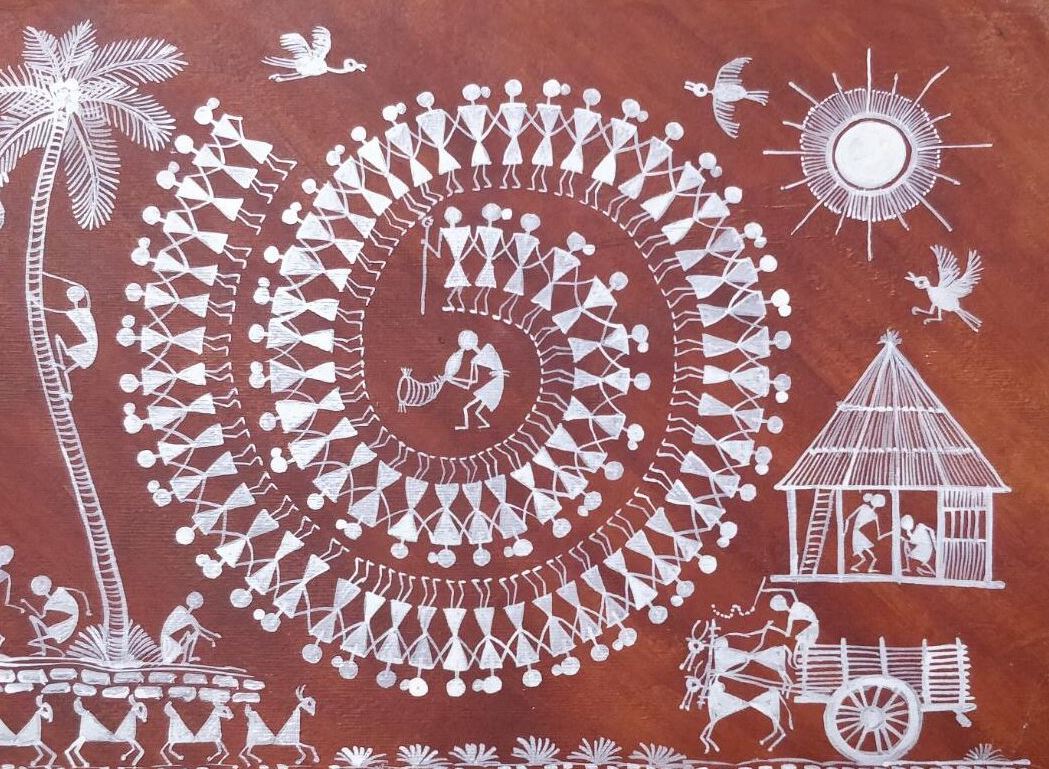
Preserving traditional arts in the modern world is not just about safeguarding our heritage; it’s about ensuring that the canvas of our culture remains vibrant with the timeless brushstrokes of tradition amidst the ever-changing strokes of progress.
The age-old forms of artistic expression via art, craft, painting and sculptures have not only adorned our homes and temples but have also reflected the soul of a nation. As we stand on the precipice of progress, it is imperative to recognize that the past holds within its strokes and carvings, the keys to our cultural identity and a legacy worth preserving.
A Cultural Legacy: bridging past and present
Traditional art in India encompasses a wide array of forms, including intricate handicrafts, mesmerizing paintings, and awe-inspiring sculptures. These artistic expressions have been nurtured over generations, encapsulating the essence of Indian culture, spirituality, and creativity. They serve as a bridge connecting contemporary India to its glorious past. However, in the face of modernization, these traditional art forms confront numerous challenges that threaten their existence and some of these are:
Globalization and Commercialization: Globalization has ushered in mass-produced, commercialized goods, which often overshadow the authenticity and craftsmanship of traditional Indian art and craft. Consumers increasingly prefer factory-made products over handmade artworks. But there is no comparison to hand-made products/artifacts.
Declining Artisan Population: Traditional artists and craftsmen often struggle to make a decent livelihood from their skills, leading to a dwindling number of artisans. The younger generation, seeking more lucrative careers, is less inclined to take up these traditional crafts.
Loss of Skills and Techniques: With the passing of older generations, the intricate skills and techniques required for traditional art, craft, painting, and sculpture are at risk of being lost forever.
Neglect and Lack of Awareness: In urban areas, many people are unaware of the cultural and artistic significance of traditional art forms. Neglect, combined with a lack of education and awareness, contributes to the decline of these forms.
However, Indian art and culture are weaving their way into the mainstream, as the threads of preservation and introduction are creating a vibrant tapestry that resonates with newer generations, bridging the timeless with the contemporary. Some of the classic examples we can see are;
Madhubani Art Conservation: The Madhubani art form from Bihar has received attention for its exquisite paintings, traditionally created by women. Organizations like the Mithila Art Institute work to preserve this ancient art by training new generations of artists and creating market opportunities.
Woodcarving in Kashmir: The traditional art of woodcarving in Kashmir has been rejuvenated through initiatives like the Jammu and Kashmir Academy of Art, Culture, and Languages, which promotes and preserves this intricate craft.
Phulkari Embroidery: A vibrant traditional art form from Punjab, embodies the resilience of India’s cultural heritage. Despite modernization’s challenges, initiatives have revived this craft, and it now finds a place in contemporary fashion and design. Phulkari’s revival showcases the enduring importance of preserving traditional arts in India.
Indian artists are forging a new path in the art world by channelling their creativity towards sustainable art in paintings and sculptures. Through their works, they raise poignant issues of sustainability, environmental concerns, and our intricate relationship with nature. These artists are not only crafting masterpieces but also a powerful narrative that encourages us to reflect on our responsibility towards the planet.
According to a report by the Crafts Council of India, traditional crafts provide employment to over 7 million people in rural India. In the last decade, there has been a decline of approximately 27% in the number of artisans engaged in traditional crafts, as per data from the Ministry of Micro, Small, and Medium Enterprises. The Indian National Trust for Art and Cultural Heritage (INTACH) reports that nearly 40% of traditional sculptures and paintings are in a state of deterioration due to environmental factors and neglect.
Paving the Path to Prevention
Artisan Empowerment: Providing financial support, training, and access to markets can empower traditional artisans, encouraging them to continue their crafts.
Skill Documentation: Initiatives to document and archive traditional art techniques can ensure that these skills are passed on to future generations.
Art and Craft Tourism: Promoting traditional art, crafts, paintings, and sculptures as tourist attractions can generate income for artisans and foster appreciation among tourists.
Government Support: Collaborative efforts between the government and cultural organizations can provide funding, infrastructure, and platforms for the promotion and preservation of traditional arts.
Preserving traditional art, craft, painting, and sculpture in India is crucial to maintaining the nation’s cultural heritage and identity. These forms of expression are not just artworks; they are living testaments to India’s rich history and artistic prowess. By recognizing the challenges faced by traditional artisans and implementing strategic measures to address them, India can ensure that its remarkable cultural legacy continues to thrive in the modern world.
The author is an accomplished Art Curator and a dedicated Board Member of VR South Asia